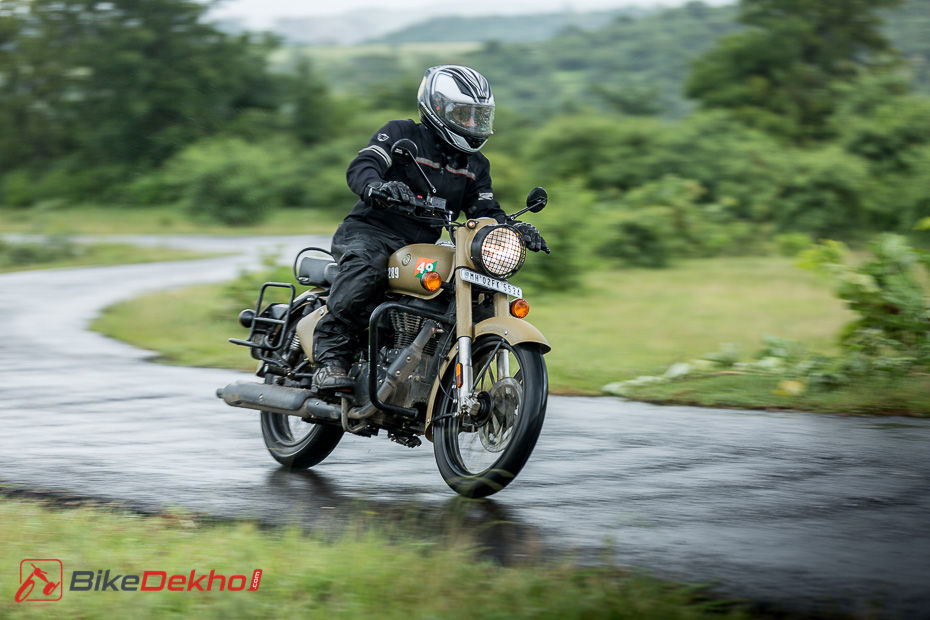Royal Enfield Classic 350: Road Test In Images
Modified On Sep 16, 2020 01:56 PM By Zaran Mody for Royal Enfield Classic 350 (2012-2021)
- 3986 Views
- Write a comment
It’s received its first significant update in over a decade. How different does the Classic 350 now feel?

Royal Enfield has to keep the legacy of its best-selling model alive, and so it has upgraded the Classic 350 to comply with BS6 emission norms. But are the updates comprehensive enough to make it as desirable as its predecessor, or maybe even more?

One of the biggest reasons for the Classic 350’s popularity has been its styling. So it isn’t surprising to see Royal Enfield not tinkering with it. All the old-school elements like the round headlight, teardrop fuel tank, triangular side panels and sprung rider’s seat have been retained.

The riding ergonomics are quite upright, offering a commanding view of the road ahead. The footpegs are forward-set and the wide handlebars are easy and comfortable to hold on to. Taller riders might appreciate the slightly taller handlebar as it could take the strain off their shoulders.

Both the rider’s seat and the pillion seat are quite roomy and comfortable. Thanks to the sprung rider’s seat, sharp bumps are filtered out easily. In our stint with the motorcycle, we found the cushioning to be balanced enough to absorb bumps effectively without making the rider feel fatigued over long hours on the saddle.

One thing that’s immediately noticeable about the updated engine is how sharp the throttle response has become thanks to the fuel injection system. Even the on-off throttle transition feels gradual and natural. The top end also sees an ever-so-slight improvement. But being a long-stroke, push-rod engine, it is still as laid back as before.

The gearing is well-spaced and the low-end torque is good enough to haul the motorcycle from standstill with deftness. That said, the high kerb weight of 195kg plays spoilsport in fully enjoying the bottom-end grunt. The 4th gear is tractable enough to let the bike happily trundle around in the city with the speedometer needle sitting at 50kmph.

Suspension setup is well tuned to absorb most of the bumps Indian roads can throw at you. This along with the large 19-inch front and 18-inch rear spoke wheel make sure the bike maintains its composure even on very sharp bumps.

The Royal Enfield Classic 350 BS6 really shines when it comes to braking. The 280mm front and 240mm rear disc have a fierce bite, linear progression and feel, bringing the 195kg hunk of metal to a surprisingly quick halt. The dual-channel ABS also does a great job of keeping the bike planted while panic braking.

The Classic is woefully short on useful features like a tripmeter or a proper fuel gauge. You can’t rely on getting a clear look of the inside of the fuel tank either as there’s a metal panel obstructing the view. The illumination of the instrument cluster isn’t good enough at night and during day time, the neutral light is a little too faint to be visible properly.

As an overall package, the BS6-compliant Royal Enfield Classic 350 feels more like a stop-gap measure until the next-generation Classic arrives. Other than the cleaner motor. there are no tangible features to justify the extra premium. If you are planning to buy one right now, we’d suggest you wait for the next-generation Classic 350 to arrive.
